

by Guy Zebrick
Fluid changing is not an option, and there are other fluids in your car than just the oil! Changing the transmission and differential fluid allows the rotating parts to remain properly lubricated, provides you a better shifting feel and gives you the satisfaction of knowing that you're protecting your car from wear.
The 6 speed manual transmission, introduced in 1999, has a couple variations to the fluid change procedure from the previous 5 speeds. Here is a guide to changing your 6 speed's fluids.
An extra person is a good idea when it comes time to actually pour the fluid in.
Some paper towels and newspaper to cover any spills.
Car ramps and a pair of jack stands, or 4 jack stands.
A creeper or something to lay on as you crawl on your back under your car.
10mm, 14mm, 17mm and 24mm sockets + ratchet
(2) bottles of transmission fluid of choice. My latest is Redline MT-90. Also, one quart of fluid for the differential.
An oil drain pan and a place to properly dispose of it. AutoZone sells them, and you can bring your oil there and dump it in their tank for recycling. Be green!
A small funnel and about 5' of 1/2 diameter clear tubing. You can get both for less than $4.00 at your nearby Home Depot.
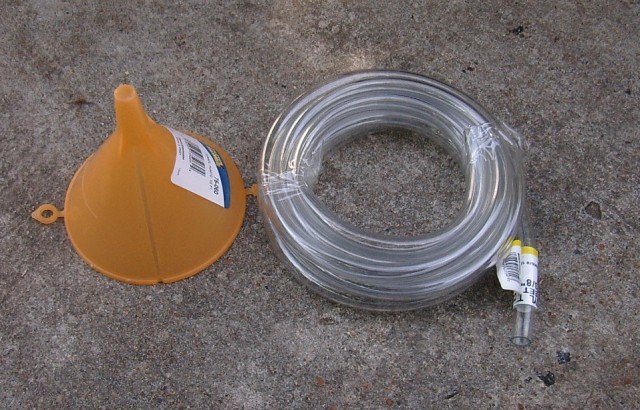
1.) The car will need to go up on 4 jack stands, or as an alternative, drive the car up on a pair of ramps, then jack up the rear end and put the rear of the car up on 2 jack stands. I prefer this method.
BE SAFE: NEVER GET UNDER YOUR CAR WITH JUST A TIRE-CHANGING JACK. You want to live to drive your car with your new transmission fluid, don't you?
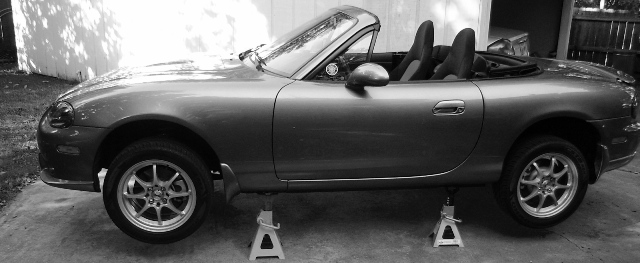
2.)Let the car cool down all the way. You'll be messing around very close to the exhaust pipes. Be safe, and let the exhaust be cool to the touch before you even start.
3.) Under the car, (pic is looking towards the back) there are 2 shields. A front silver one, and a larger black one in the middle of the car.
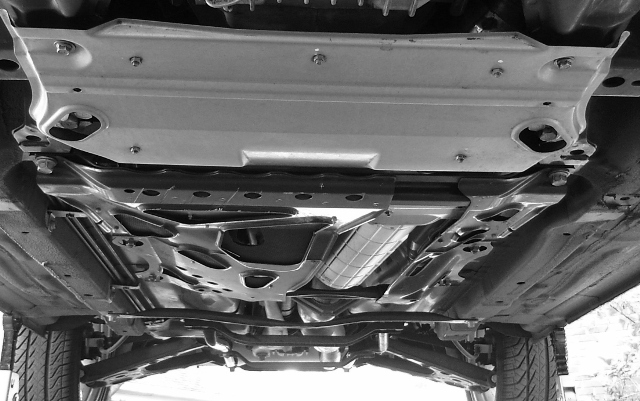
Remove the larger black shield in the middle of the car first. Use a 14mm socket to loosen (but NOT remove) the 2 rear-most nuts, the same socket to REMOVE the 2 middle nuts, and a 17mm socket to remove the 2 large BOLTS at the front of the shield. It is a bit heavy, so be careful removing it. The two rear nuts can stay on the car, and they'll help when you re-install the shield.
4.) Next, remove the smaller silver shield by removing the 4 10mm bolts holding it on. Be careful as this shield has sharp edges.
When you're done, you'll have this:
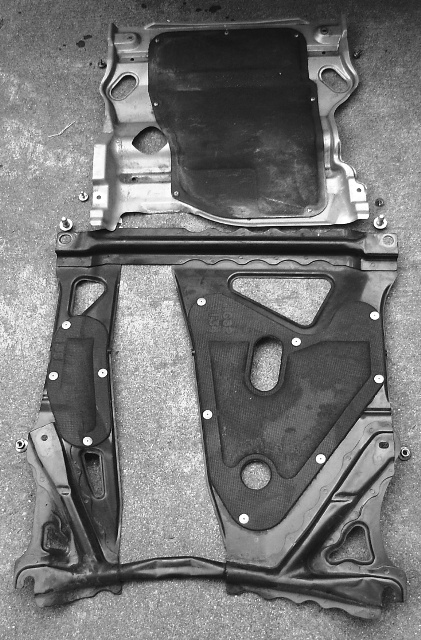
And now you can get to the transmission drain and fill bolts.
IMPORTANT: DO NOT REMOVE THE BOLT ON THE PASSENGER SIDE OF THE TRANSMISSION. It holds important internal pieces together.
If you remove it by mistake, your car will have to go into the shop, and the transmission will have to be pulled out, pulled apart, and repaired.
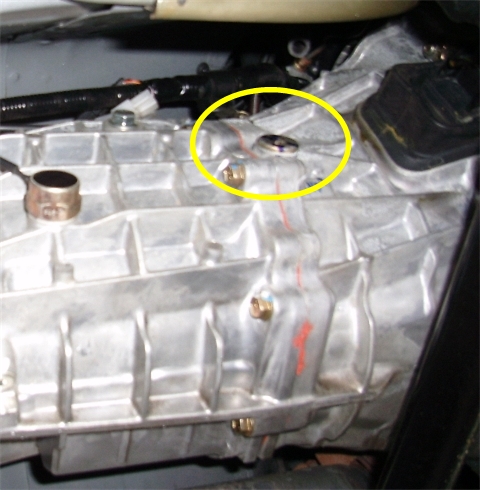
Instead, you'll want be removing the FILL and DRAIN bolts. They're on the Driver's side of the transmission tucked in close to the exhaust pipe! Here's the Fill Bolt (see finger):
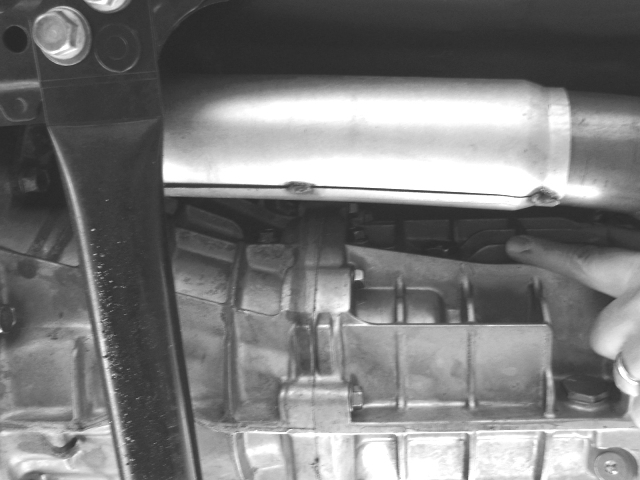
And here's the Drain Bolt (see finger):

5.) Next: Make sure you can remove the FILL Bolt BEFORE you remove the drain bolt. It is a tight squeeze around the exhaust pipe. I only have one combination of 1/2" ratchet and 24mm socket that fits (see below). You don't want to drain your fluid and then find out that you're stuck because you can't fill your transmission back up again!
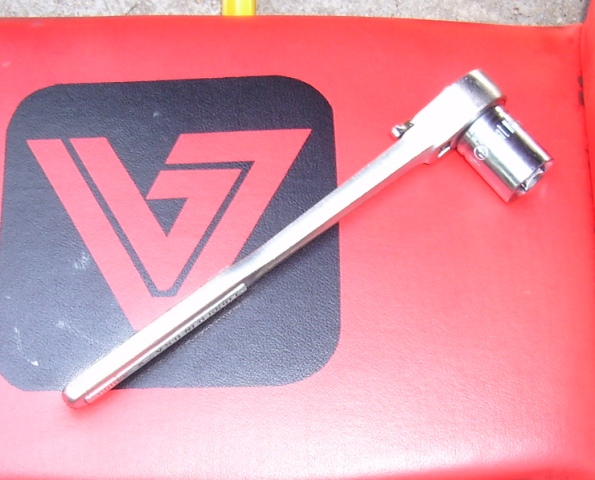
6.) Work the ratchet and 24 mm socket between the transmission and the exhaust pipe (tight squeeze) and then Break loose the fill bolt, then slide the oil drain pan under the tranny and remove the DRAIN bolt. With the fill bolt still in, the oil will come out slow. If you want, go ahead and remove the FILL bolt while the fluid is draining to speed things up a bit.

7.) Clean the plug. You'll notice that the drain plug is different than the fill plug. It has a built-in magnet. The magnet captures the little pieces of metal that grind off the gears. You'll want to inspect it. If it is covered in big chunks, you may have some trouble, but a little grit is normal. Here's mine:
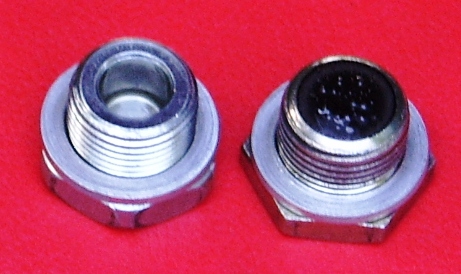
and then again, after I cleaned it up:
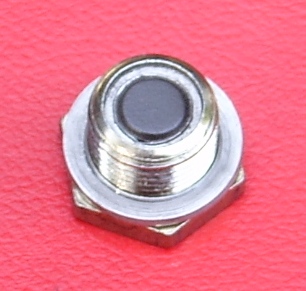
They're a pain to clean because the grit doesn't want to come off the magnet, but I have compressed air, and the high pressure nozzle works for me.
9.) When the fluid is all out, go ahead and put the cleaned-up DRAIN plug back in. Make sure it's TIGHT!
10.) Time to snake one end of the clear tube down from the engine bay to INTO the FILL hole in the transmission.
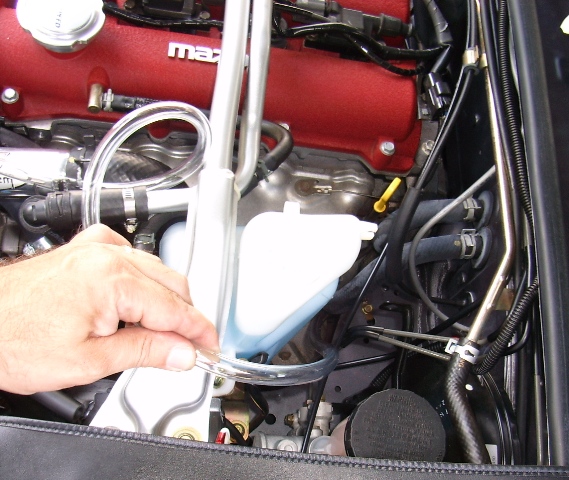
Here's what it looks like underneath with the tube in the fill hole:

10.) Position the oil drain pan under the FILL hole. Some is going to leak out when it is full.
11.) Secure the funnel to the end of the tube under the hood, and WHILE someone is under the car HOLDING THE TUBE IN THE TRANSMISSION, have someone else slowly pour the two bottles into the funnel. The tube will want to slip out of the fill hole, and it will be a mess, plus you won't have enough fluid to finish the job if some of it is pooling on the concrete. So, hold it in as the fluid pours.
The transmission fluid should start to overflow through the FILL tube just as the last bottle runs out. - That's when you're FULL.
12.) Remove the tube and clean up the drips.
13.) Time to put the FILL bolt back in. Make sure that it is TIGHT.
14.) Now reverse the procedure for installing the two shields. Smaller front silver one first, than the larger BLACK one. You can slide the rear of the black on on top of the two nuts that are still on the car to make it easier to lift and line up.
...and you're done with your Transmission fluid.
While the car is up on jacks, and you've got all your tools out, it is a good idea to go ahead and change out the differential fluid in the rear end as well. It is very easy. You might want a pump to get the fresh oil in instead of a funnel. Pumps for this are cheap and are at most auto parts stores, though I think the funnel could also work if you're creative with how you run the tube and hold the funnel.
Here's the Drain and Fill bolts. Just like the transmission, you'll need your 24mm socket.
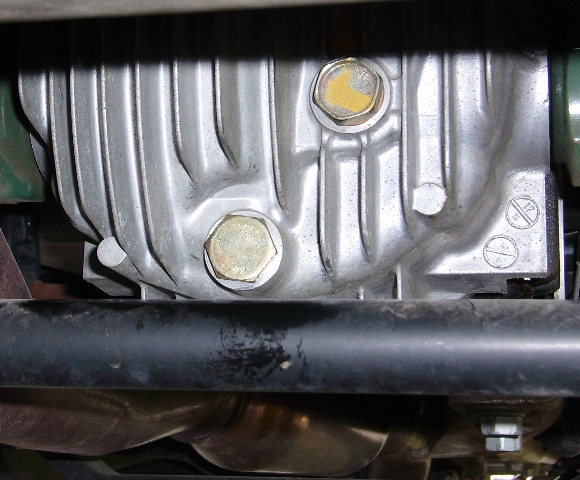
Move the drain pan under the differentail, remove the bolts... and there goes the old fluid. Mine was actually pretty nasty for only 12K miles. I think I'll try to change my differential fluid at least once a year based on the color.

Clean up the magnetic drain plug as you did with the transmission plug, put it back in and refill the differential with your favorite fluid. It will take one bottle. Funnel or pump will do. I use Redline 75W90. Pour it in until it overflows through the fill hole.
Replace the fill plug nice and tight, and you're done!
Notes from John Bowling:
After studying the above article I set about changing the lubes in my 2002 NB 6-speed manual transmission and differential. I found an error in the How To that will hinder everyone who follows it if their transmissions are like mine.
The article says to use a ratchet and socket, but mine wouldn't fit between the transmission and the exhaust pipe. It also says one plug is 23mm and the other 24mm. On my transmission, BOTH are 23mm, and my sockets go from 22mm to 24mm. But a 7/8" box wrench fits fine. In fact, it's the perfect tool for getting to the refill plug around the curve of the side of the transmission. Every set of box wrenches I've seen goes to 7/8" so it should be the tool of choice for this job, not 23mm and 24mm sockets with a ratchet. I set out to buy short 23mm and 24mm sockets (the article warns there isn't much room), but couldn't find them, so others will want to know they are not needed.
There is one thing that might make my situation unique. My transmission was replaced with a new one in about 2007, so it could be different.
Checking a conversion chart for mm to SAE wrench sizes, it appears that 23mm is within 1/1000" of 7/8" so I would say both plugs are 23mm.
And lastly, I highly recommend a hand pump from an auto parts store for refilling with new fluid instead of the funnel, tube and helper method. It eliminates the need for a helper.
Image sent by Jess Dillow:

Note from Andrew:
7/8ths does not equate to 23mm. 7/8th is to about 22mm and 15/16ht is to about 24mm.
I would also add that if using a box wrench vs. a socket for the transmission oil bolts you will want one that is an off-set design (has a bend more than your standard end) or you risk poor contact and hence rounding the bolt. I used a 1/2 breaker that could bend past 90 degrees which allowed me, with a short 24mm, socket to connect flat to the fill bolt and line the bar up between the exhaust and tranny.
http://extension.missouri.edu/webster/wrench-chart.aspx
I actually went out and bought a 7/8th wrench and it does not fit over the transmission oil drain/fill bolts so this feedback is not just from a chart.
Additionally, for the newbies like me, the plates under the car might look different than in the write up. mine do.
| Back to the Garage |
10 July, 2014 |
| [Home] - [FAQ] - [Search] - [Sponsors] - [Forums] |
| [Garage] - [Clubs] - [Contact Us] - [Disclosures] - [More...] |
Copyright
©1994-2022, Eunos Communications LLC
|